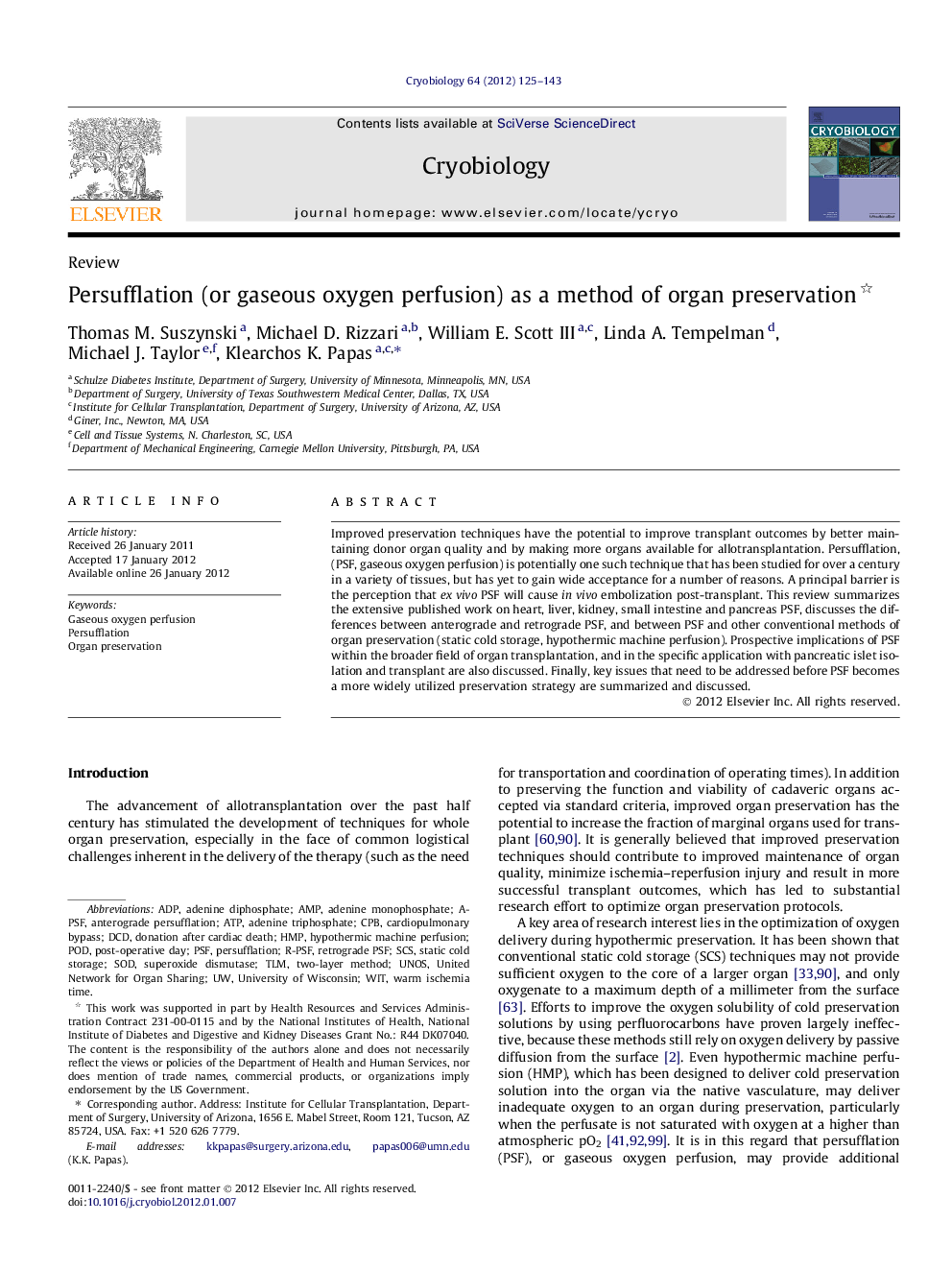| Article ID | Journal | Published Year | Pages | File Type |
|---|---|---|---|---|
| 2168696 | Cryobiology | 2012 | 19 Pages |
Improved preservation techniques have the potential to improve transplant outcomes by better maintaining donor organ quality and by making more organs available for allotransplantation. Persufflation, (PSF, gaseous oxygen perfusion) is potentially one such technique that has been studied for over a century in a variety of tissues, but has yet to gain wide acceptance for a number of reasons. A principal barrier is the perception that ex vivo PSF will cause in vivo embolization post-transplant. This review summarizes the extensive published work on heart, liver, kidney, small intestine and pancreas PSF, discusses the differences between anterograde and retrograde PSF, and between PSF and other conventional methods of organ preservation (static cold storage, hypothermic machine perfusion). Prospective implications of PSF within the broader field of organ transplantation, and in the specific application with pancreatic islet isolation and transplant are also discussed. Finally, key issues that need to be addressed before PSF becomes a more widely utilized preservation strategy are summarized and discussed.
